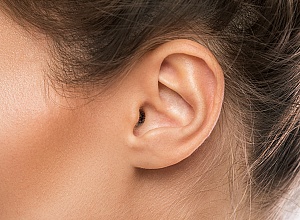Forget blowing into a breathalyser – a new drink-driving test invented by researchers in Japan could involve putting on a pair of ear defenders, writes Clare Wilson for New Scientist. The team is now developing the idea for other medical uses where a continuous read-out of blood levels of biochemicals would be helpful.
Koji Toma at Tokyo Medical and Dental University and his colleagues have created a device that captures alcohol given off by the skin of a person’s ears. It can measure the amount of alcohol in their blood and whether they are over a legal limit.
Breathalyser tests for alcohol used by many police forces require blowing steadily into a device for several seconds, and some people can’t manage this, or claim they can’t. A skin-based test solved both issues. “They can’t cheat through their skin,” says Toma.
Toma and his team had previously investigated measuring blood alcohol using the skin of the palm, but they wondered if the ears would be better, as they have they have a large surface area, the skin is thin and has few sweat glands, too many of which make the results too variable.
“If the signal is not stable we can’t estimate the concentration properly,” says Toma, according to the New Scientist.
The researchers modified a pair of ear defenders so a stream of air could be blown into and out of them. Three men wore the device over their ears for 140 minutes while they had an alcoholic drink, and also took regular breathalyser tests. The air leaving the device was sent to an ethanol vapour sensor.
The team found that the earmuff readings showed a similar rise and fall in alcohol levels as the breathalyser, but with a 13-minute delay.
If someone wore the device for a one-off reading, such as if they were suspected of drink-driving, they would need to have the ear defenders on for 30 seconds, says Toma. Long hair would need to be pushed out of the way.
The team is now developing the idea for other medical uses where a continuous read-out of blood levels of biochemicals would be helpful, such as measuring a compound called acetone, which indicates how much fat is burned during exercise.
Study details
External ears for non-invasive and stable monitoring of volatile organic compounds in human blood
Koji Toma, Shota Suzuki, Takahiro Arakawa, Yasuhiko Iwasaki and Kohji Mitsubayashi
Published in Scientific Reports on 10 June 2021, Volume 11, Article number 10415.
Abstract
Volatile organic compounds (VOCs) released through skin (transcutaneous gas) has been increasing in importance for the continuous and real-time assessment of diseases or metabolisms. For stable monitoring of transcutaneous gas, finding a body part with little interference on the measurement is essential.
In this study, we have investigated the possibility of external ears for stable and real-time measurement of ethanol vapour by developing a monitoring system that consisted with an over-ear gas collection cell and a biochemical gas sensor (bio-sniffer).
The high sensitivity with the broad dynamic range (26 ppb–554 ppm), the high selectivity to ethanol, and the capability of the continuous measurement of the monitoring system uncovered three important characteristics of external ear-derived ethanol with alcohol intake for the first time: there is little interference from sweat glands to a sensor signal at the external ear; similar temporal change in ethanol concentration to that of breath with delayed peak time (avg. 13 min); relatively high concentration of ethanol relative to other parts of a body (external ear-derived ethanol:breath ethanol = 1:590). These features indicated the suitability of external ears for non-invasive monitoring of blood VOCs.
SEE MORE FROM THE MEDICALBRIEF ARCHIVES
Singapore's breathalyser COVID-19 test gets authorisation
Electronic nose detects bacteria in breath
Micro-chip implant to monitor alcohol intake

